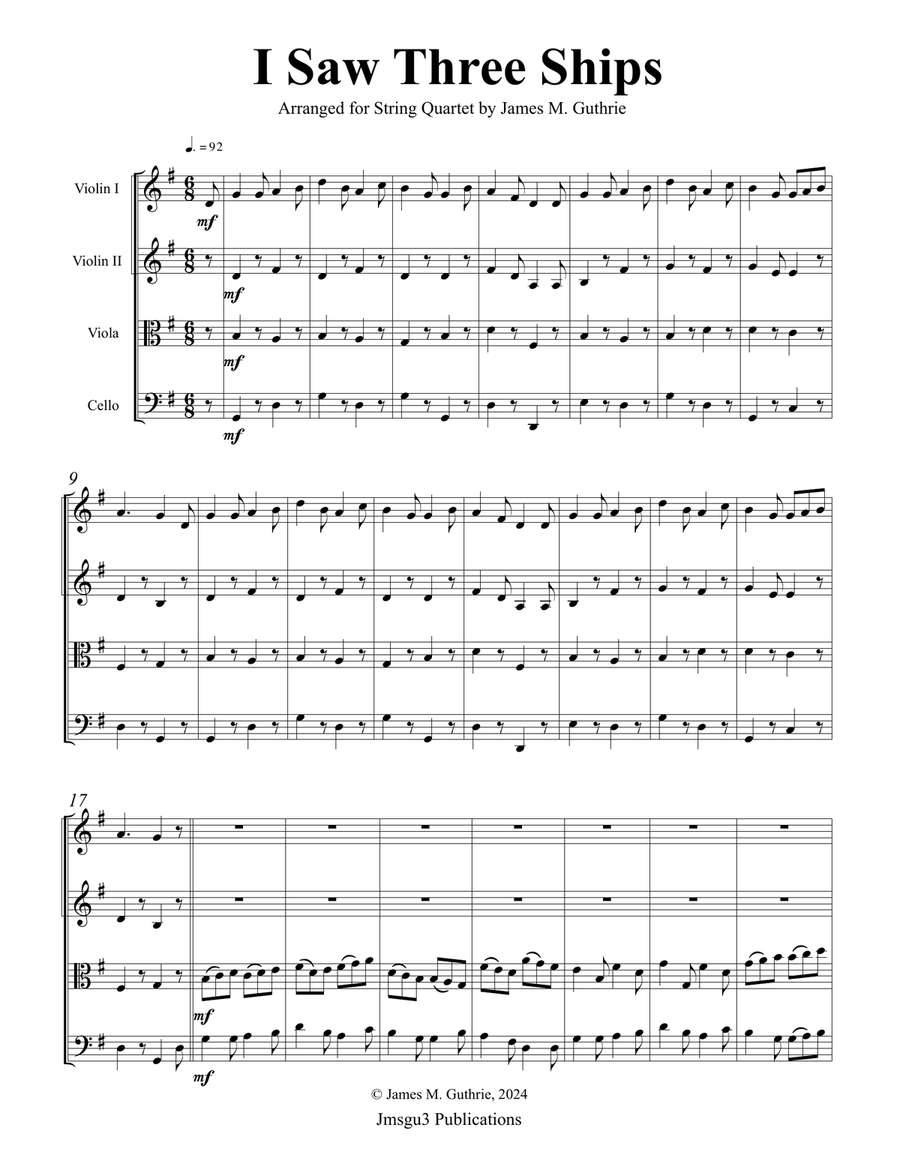String Quartet Cello,String Quartet,Viola,Violin - Level 4 - Digital Download SKU: A0.1491680 Composed by Traditional. Arranged by James M. Guthrie. Chamber,Christmas,Historic,Holiday,Traditional. 14 pages. Jmsgu3 #1068354. Published by jmsgu3 (A0.1491680). I Saw Three Ships is a traditional English Christmas carol that has gained popularity for its melodic simplicity and festive themes. Here are some key points about its significance:Historical ContextOrigins: The earliest known printed version of I Saw Three Ships dates back to the 17th century, with a notable publication by William Sandys in 1833. The song was likely known earlier under As I Sat On a Sunny Bank, particularly popular in Cornwall.Cultural Relevance: The carol reflects a period when maritime themes were prominent in English culture, coinciding with the Age of Exploration. This context made the imagery of ships particularly resonant for audiences of the time.Symbolism and InterpretationThe Ships: The lyrics describe three ships arriving on Christmas Day, which has led to various interpretations. One common belief is that the ships symbolize the three vessels that carried the relics of the Magi to Cologne Cathedral in the 12th century. Alternatively, they may represent the camels used by the Magi, often referred to as ships of the desert due to their role in transporting the wise men to Bethlehem.Bethlehem's Geography: The song mentions ships sailing into Bethlehem, which raises questions, as the nearest body of water is the Dead Sea, about 20 miles away. This discrepancy has prompted interpretations that focus on the symbolic rather than literal meaning of the ships.Musical LegacyPopularity: I Saw Three Ships has been embraced by various artists across genres, with notable recordings by musicians such as Sting, Glen Campbell, and Sufjan Stevens. Its enduring appeal makes it a staple in Christmas music repertoires.Lyric Variations: Different song versions have emerged over the years, reflecting local traditions and interpretations. Some variations even change the context from Christmas to other celebrations, demonstrating the carol's flexibility in cultural contexts.In summary, I Saw Three Ships is significant as a cherished Christmas carol and a cultural artifact that encapsulates historical maritime themes, religious symbolism, and the evolution of folk music traditions.
